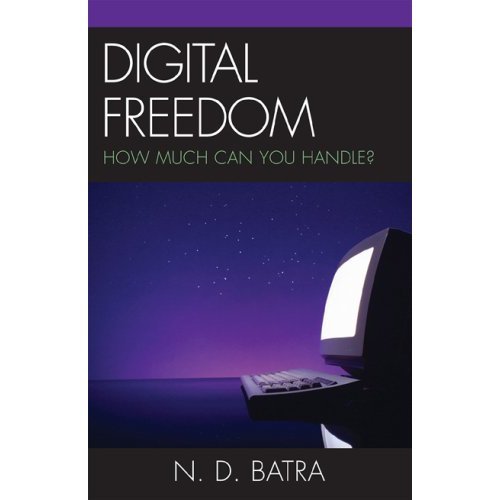Bless them all, gay & straight
From The Statesman
ND Batra
‘We must recognise that many gay and lesbian couples in New Jersey are in committed relationships and deserve the same benefits and rights as every other family in this state,” said Governor Jon Corzine of New Jersey at last week’s Bill-signing ceremony that legalises civil unions between same-sex couples.
Last October, the New Jersey Supreme Court issued a directive that gay couples be given the same rights as hetrosexual married couples, whatever the lawmakers might call such a coupling, civil union or marriage.
The biblically minded Americans believe that their children should never crouch toward Sodom and Gomorrah. And contrary to scientific evidence, many Americans consider homosexuality to be a cultivated lifestyle and wistfully think that one could be weaned away or deprogrammed out of it.Every year, schools witness fierce battles between parents and teachers as to what kind of books children should read, which sometime triggers the banning of books related to homosexuality.
Homophobia has led to violence and killing of the innocent, though in public discourse it is politically incorrect to talk about gays in derogatory terms. When the Massachusetts Supreme Judicial Court affirmed its earlier decision in February, 2004 that gays have the legal right to say “I do, I do… for richer or poorer… till death do us part,” many Bostonians went crazy. And when the Massachusetts legislators met in a constitutional convention to consider how best to nullify the divisive ruling of the highest court, hundreds of people milled around the Statehouse in Boston, some carrying placards, others shouting slogans and chanting: “Hey, hey, ho, ho/Homophobia got to go; Adam and Eve, not Adam and Steve; One Man, One Woman; Equality Now.” It sounded like the beginning of another civil war.
Nothing has divided the American people so painfully since the question of slavery as the issue of what to do with “the queer” amongst them, gays and lesbians, who have been outing themselves in hordes and getting into their faces everywhere, in television sitcoms, school textbooks, magazine covers, dance floors and legislatures. Although Americans by and large oppose gay marriages, they are inclined to accept civil unions for same sex couples that would grant them the same rights as heterosexuals have.
My home state, Vermont, was the first state to recognise civil unions for same sex couples but only after the state’s highest court ruled that gays were being deprived of the constitutionally guaranteed equal rights, and directed the state legislature to eliminate the discrimination against gays.
The Vermont highest court did not rule on marriage; rather it ruled on equal rights for all citizens, which included healthcare benefits, inheritance, separation, and other rights that go with marriage.
The Massachusetts Supreme Judicial Court went to the extreme and challenged the very definition of marriage: If marriage is essentially a union of hearts, commitment between a couple, it could be between Evelyn and Steven or Even and Steven; therefore, the concomitant rights and obligation of such a commitment must be respected.
But that’s not what the Bible says. That’s what the Constitution says.
It is only in the mass media that you see the USA as a homogeneous country.
In reality, the USA is one nation divided by diverse cultures, creeds, colour and lifestyles. Massachusetts’ legislators failed in passing an amendment that would have banned gay marriages. Fearing the tide of gay unions, 38 states have passed laws that recognise only heterosexual marriages. So what would happen to a Massachusetts gay, married couple, let’s say with adopted children, when they move to a no-gay marriage state?
The state of union today is no different from what was before the civil war when in some states slavery was legal and in other states, illegal. No politician who seeks a public office can duck the question of gay marriage. Many favour the civil union route to solve the thorny problem. President George W Bush, a devout Christian, has said unequivocally that marriage is between a man and woman but he got no support for a federal constitutional amendment banning gay marriages.Nonetheless, a 1996 federal law defines marriage between a man and a woman, which means that a gay partner won’t be able to collect social security benefits from the federal government after the death of the partner.
The best solution may be to eliminate the word marriage from the American lingua franca and replace it with civil union for all whether gay or straight. Eliminate husband and wife and replace them with spouse. The priest should say: Now I pronounce you spouse and spouse. Now you may kiss the spouse, blah, blah. Words have unstable meanings in the digital age. They change, they die, and they are born again.
Occasionally, I see advertisements in my local newspaper that run like this: A husband (handyman) for a day at a reasonable hourly rate. Wife (sewing woman) wanted, good salary and benefits. Living together and having children out of wedlock used to be considered an unpardonable sin (Consider Nathaniel Hawthorne’s The Scarlet Letter) but it is now so commonplace that wife and girlfriend or husband and boyfriend have become interchangeable.A recent survey said that 85 per cent Americans, both men and women, admit to having pre-marital sex.
The USA is indeed a melting pot; but of what? Confusion worst confounded. Nonetheless, I would say, this is the best country to live in, the shining city on the hill.
